Bachelor of Science with a Major in Earth and Environmental Sciences
The Earth and Environmental Sciences (EES) program and degree at UWG offers multiple concentrations for students to pursue education and career pathways focusing on the Earth’s physical composition, its surface and atmospheric systems, and how these interact and are impacted by human activities. This broad area of interest, furthermore, is understood and explored using an integrated systems approach, emphasizing the spatial and temporal relationships within and between relevant natural and human systems. All EES students are prepared for future careers by gaining a particular skillset that enables them to analyze and explain conditions and processes that fall within this earth and environmental sciences framework. The culmination of this learning is the formulation, execution, and presentation of a faculty mentored research project.
For more information, please see the Academic Catalog. A program map, which provides a guide for students to plan their course of study, is available for download in the Courses tab below.
Based on existing faculty expertise, students majoring with a BS in EES can pursue one of three concentrations, each with its own thematic focus and methodology:
Environmental Sustainability Concentration
This is a flexible concentration aimed at providing students with multiple pathways to developing the knowledge and skills demanded in the burgeoning field of environmental assessment, management and planning.
Professional Geology Concentration
This concentration focuses on giving students a well rounded understanding of geology and its relevance to humanity. The aim is to have students be able to pass the ASBOG exam required to becoming a licensed professional geologist.
Geographic Information Science Concentration
This concentration is focused on having students become knowledgeable and skilled in the high-demand field of geospatial technologies, including GIS-based map making and the use/analysis of satellite and air-photo imagery.
Career Opportunities
Link to Additional Career Information:
https://www.buzzfile.com/Major/Geology.And.Earth-Science
External Resource
Program Location
Carrollton Campus
Method of Delivery
Face to Face
Accreditation
The University of West Georgia is accredited by The Southern Association of Colleges and Schools Commission on Colleges (SACSCOC).
Credit and transfer
Total semester hours required: 120
This program may be earned entirely face-to-face. However, depending on the courses chosen, a student may choose to take some partially or fully online courses.
Save money
UWG is often ranked as one of the most affordable accredited universities of its kind, regardless of the method of delivery chosen.
Details
- Total tuition costs and fees may vary, depending on the instructional method of the courses in which the student chooses to enroll.
- The more courses a student takes in a single term, the more they will typically save in fees and total cost.
- Face-to-face or partially online courses are charged at the general tuition rate and all mandatory campus fees, based on the student's residency (non-residents are charged at a higher rate).
- Fully or entirely online course tuition rates and fees my vary depending on the program. Students enrolled in exclusively online courses do not pay non-Resident rates.
- Together this means that GA residents pay about the same if they take all face-to-face or partially online courses as they do if they take only fully online courses exclusively; while non-residents save money by taking fully online courses.
- One word of caution: If a student takes a combination of face-to-face and online courses in a single term, he/she will pay both all mandatory campus fees and the higher eTuition rate.
- For cost information, as well as payment deadlines, see the Student Accounts and Billing Services website
There are a variety of financial assistance options for students, including scholarships and work study programs. Visit the Office of Financial Aid's website for more information.
Coursework
Core IMPACTS General Education Requirements: (Note: Core IMPACTS Area M must include the following course and Core IMPACTS Area T must follow Option II)
- MATH 1113
Required for All Concentrations:
- GEOL 1121
- GEOL 1121L
- GEOG 1112
- GEOG 1112L
- GEOG 2253
Choose between GEOG or GEOL options
- GEOG 1113
- GEOG 1113L
(or) - GEOL 1122
- GEOL 1122L
Choose either MATH
- MATH 1401
(or) - MATH 1634
If needed, MATH credit from Core IMPACTS Area M and Core IMPACTS Area T and/or 1000/2000 level academic elective in GEOG, GEOL, CHEM, BIOL, PHYS, CS.
Environmental Sustainability Concentration
Required lower level courses 2-6 Credit Hours
- GEOG 1013
- GEOG 2202
- GEOG 2202L
- GEOG 2333
(or) - GEOL 2333
Required upper level courses 15-17 Credit Hours
- GEOL 3603
- GEOG 3333
(or) - GEOL 3333
- GEOG 3405
- GEOL 4093
- GEOG 4333
(or) - GEOL 4333
- GEOG 4700
Choose two foundational upper level courses 6-8 Credit Hours
- GEOG 3713
- GEOG 3800
- GEOG 3900
- GEOL 4003
- GEOL 4084
- GEOG 4103
- GEOG 4600
- GEOG 4900
Choose one techniques/skills upper level course 3-4 Credit Hours
- GEOL 3004
- GEOG 3563
- GEOG 4553
- GEOG 4086
Choose one transdisciplinary upper level course 3-4 Credit Hours
- GEOL 3014
- GEOG 3020
- GEOG 3253
- GEOG 3643
- GEOG 3644
- GEOL 4024
- GEOL 4083
- GEOL 4604
Additional upper level electives 6-12 Credit Hours
Professional Geology Concentration
Required lower level courses 2-10 Credit Hours
- GEOL 1122
- GEOL 1122L
- CHEM 1211
- CHEM 1211L
- GEOG 2333
(or) - GEOL 2333
Required upper level courses 35-37 Credit Hours
- GEOL 3004
- GEOL 3014
- GEOL 3024
- GEOG 3333
(or) - GEOL 3333
- GEOL 3034
- GEOL 4024
- GEOL 4034
- GEOL 4084
- GEOG 4333
(or) - GEOL 4333
- GEOL 4604
Additional upper level electives 2-4 Credit Hours
Geographic Information Science Concentration
Required lower level courses 2-6 Credit Hours
- GEOG 1013
- GEOG 2202
- GEOG 2202L
- GEOG 2333
(or) - GEOL 2333
Required upper level courses 15-17 Credit Hours
- GEOG 3333
(or) - GEOL 3333
- GEOG 3563
- GEOG 4333
(or) - GEOL 4333
- GEOG 4553
- GEOG 4554
Choose two specialized upper level courses 12 Credit Hours
- GEOG 4562
- GEOG 4564
- GEOG 4753
- GEOG 4755
- GEOG 4757
- GEOG 4893
Additional upper level electives 10-12 Credit Hours
Note: A maximum of six hours of independent research is allowed in the major. Must complete minimum of 6 hours 3000/4000 level DSW courses. Must complete minimum of 39 hours courses numbered 3000 or greater.
Downloads
Environmental Sustainability Concentration
An introduction survey of world geography with attention given to demographic, political, cultural, economic, and environmental characteristics of regions of the world. Especially recommended for education majors.
This course will focus on the key principles of environmental science, paying special attention to environmental systems and human interactions with these systems. The aim of the course is to give the student a solid, scientifically based understanding of the earth's current environment and how to analyze, assess, and begin to address human populations' impact on this environment.
This lab course will bring key principles of environmental science to a lab setting. The aim of the lab exercises is to give the student a hands-on experience involving basic observation, evaluation, and assessment of environmental themes and problems.
An introduction to earth and environmental sciences through career preparation and research methods. The course allows the sophomore level student to explore sub-disciplines and takes a comprehensive approach to the research process. This may include the development of a research question, identifying and working with relevant data, applying appropriate methods of analysis, and effectively formulating research findings.
Political geography is concerned with the spatial dynamics of power relations. This course focuses particularly on the nation-state, exploring the logic of the state and how it manages to legitimize itself as the dominant arbiter of political power. The course will also look at interactions between states and how they compete to control and dominate territory and resources.
A study of the economy and its geographical structures and patterns. Introduces and critiques theories of location and economic landscapes and processes and develops a conceptual framework of the economy that encompasses the constitutive roles of spatial relations and nature-society relationships. and structural relationships among economic activities. Same as ECON 3425.
This course is focused on helping students execute a doable research project with the help and guidance of an instructor. The student will largely be engaged in independent work that is developed and checked with the help of the instructor. Research or other work related to a student s independent project. This is a 1-3 hour course repeatable up to six hours.
A study of the inherent geographical challenges and possible solutions to a global economic system that is quickly depleting scarce resources while causing rapid environmental strain.
This course introduces the principles of remote sensing and explores the practical integration of remote sensing with geographic information systems.
Introduction to urban processes and patterns, including: global urbanization and the origin of cities; urban hierarchies and systems of cities; global cities; uneven economic growth and the functional specialization of cities; economic restructuring, migration, regional policies, dynamics of urban property markets; changes in population job location, housing, mobility and neighborhoods; ethno-cultural diversity, and spatial inequalities; and planning, politics and policy issues in North American cities.
This course examines the geographic dimensions of the city of Atlanta and its metropolitan region. Students will gain an understanding of the historical, urban, social, economic, political and physical patterns and processes shaping the city and metro area at different geographic scales: at the local and metro scales, the city's growth and internal structure; at the regional scale, the city's role in the American South; and at the national and global scales, the city's dynamic position in wider urban, economic and social systems.
A study of weather and climate, including atmospheric properties and processes, and atmospheric influences on Earth's surface environment, at a variety of spatial and time-scales.
Biogeography is the subdiscipline of Geography that deals with the distribution, ranges, and limits of plants and animals over space and time. This class will focus on the processes and patterns of plant distribution in the contemporary landscape, stressing the development of North American vegetation. The course will cover topics evolution as it relates to Quaternary migration and distribution, North American biomes, disturbance ecology, invasive species, environmental stewardship, climate change, and field methods.
Ecology and Climatology are two vastly different disciplines. Ecology is concerned with the interactions of organisms with their environments and Climatology is the study of the long-term physical state of the atmosphere. There two disciplines were not combined until the advent of global climate models in the 1970s. Ecological climatology is the interdisciplinary framework used to understand the functioning of the terrestrial ecosystems as part of the climate system. Specifically, how do changes in land cover influence short-term and long-term weather patterns.
Students will secure a position with an entity outside of UWG (corporation, foundation, government, etc.) to obtain field experience. Repeatable for up to nine credit hours.
An introduction to soils from a natural science perspective, emphasizing the relationship between soils and geology, climate, vegetation, and landscapes. Concepts will include soil physical and chemical properties, soil formation and horizonation, soil water, erosion, soil geography, and environmental and sustainability issues related to soil. Practical field and laboratory skills will be emphasized, including standard techniques and terminology for describing soils in the field, applying the US system of soil classification, interpreting National Resources Conservation Service soil survey data and performing geospatial analysis of digital soils data. A required field trip will allow students to observe soils in a variety of landscape settings.
A capstone course intended for Earth and Environmental Sciences seniors. This course focuses on the final stages of the research process and the next steps in pursuing a career within the field. Areas of focus include how to effectively communicate research findings, how to discuss the relevance of these findings in both academic and civil contexts, and how to professionally present and communicate expertise and skills developed while being a student within the Earth and Environmental Sciences program. This is a writing intensive course (DSW) that will use various review and feedback options to help students hone the written and oral presentation of their research. Lastly, being a course designed for seniors who will soon be entering the job market, there will also be a discipline-specific focus on career aspirations, how to search for a job, CV preparation, and interview skills.
An introduction to the use of Geographic Information Systems, including GIS theory, data input, spatial analysis, and final output.
This course provides an introduction to the fundamentals of climatology with an emphasis on how the climate system works, quantitative approaches to climate analysis, the planetary energy budget, and air-sea interactions. Urban, regional and global climate features and human impacts are addressed. Current issues in climate research, sustainability, and policy will also be explored.
This is an advanced course on the evidence for, and theories of, environmental variability over time. Students will become familiar with environmental change before and since the Industrial Revolution. Attention will be paid to natural environmental mechanisms and the human activities
Dendrochronology is one of the most versatile disciplines in the physical and cultural sciences. The science uses tree rings that are dated to their exact year of formation to analyze the temporal and spatial patterns of processes in the physical and cultural sciences. The science takes advantage of the fact that trees are nature's ultimate environmental monitoring stations. They are immobile, they assimilate events in the environment, they have their own special language, and they can't lie (although sometimes they make searching for the truth quite challenging). In this course, you'll learn how to read the language of trees and how to use this information to learn about past and present environmental processes that may shed light on your particular research questions.
An introduction to earth and environmental sciences through career preparation and research methods. The course allows the sophomore level student to explore sub-disciplines and takes a comprehensive approach to the research process. This may include the development of a research question, identifying and working with relevant data, applying appropriate methods of analysis, and effectively formulating research findings.
A practical course that familiarizes students with basic instruments and techniques used by Geologists to collect structural, stratigraphic, topographic and other data in the field.
The origin and physical properties of the more common minerals and their crystal forms. Megascopic recognition of specimens, their mineral associations, and a brief introduction to modern x-ray diffraction. CHEM 1211 may be taken concurrently.
This course is focused on helping students execute a doable research project with the help and guidance of an instructor. The student will largely be engaged in independent work that is developed and checked with the help of the instructor. Research or other work related to a student s independent project. This is a 1-3 hour course repeatable up to six hours.
The interaction between human activity and geologic processes. Included are natural hazards such as earthquakes, landslides, volcanoes, and flooding, human induced problems such as groundwater pollution, erosion and the exploitation of natural resources including rivers, shorelines, petroleum, and ores. Emphasis is placed on the understanding of underlying natural processes and the prediction and mitigation of problems.
Characteristics, classification, genesis, and evolution of major earth surface features (landforms) and their associations (landscapes). The conceptual framework will involve understanding lithologic, structural, climatic temporal, and process controls. Includes applied aspects of humans as geomorphic agents and geomorphic processes as natural hazards. Topo-graphic map and air photo interpretation will be stressed.
Classification, biology, distribution and diversity of major invertebrate animals with a fossil record. The course is designed to integrate modern biological concepts as applied to fossil organisms. Students will study fossil organisms to develop an understanding of the principles of evolution, stratigraphic correlation, and paleoecology.
The geochemistry of the earth's lithosphere, biosphere, hydrosphere, and atmosphere and the human modifications to these systems that cause environmental problems. Special topics include acid rain, greenhouse effect, toxic trace elements, landfills, energy usage and radon.
An investigation of groundwater and the earth's hydrologic cycle. Examines the physical aspects of groundwater occurrence and movement, and provides an introduction to contaminant transport and chemical hydrogeology. Lab exercises will acquaint students with hydrogeology field methods and equipment.
A multidisciplinary investigation into the major societal issue of increasing impacts of natural hazards. Examines property damage and loss of life caused by geologic hazards (earthquakes, landslides, volcanoes), meteorological hazards (hurricanes, tornadoes, floods), and others (fires, technological hazards, biohazards). A major focus will be on social science issue of planning, politics, economics and their control on management of high hazard areas, vulnerability assessments, and mitigation.
A capstone course intended for Earth and Environmental Sciences seniors. This course focuses on the final stages of the research process and the next steps in pursuing a career within the field. Areas of focus include how to effectively communicate research findings, how to discuss the relevance of these findings in both academic and civil contexts, and how to professionally present and communicate expertise and skills developed while being a student within the Earth and Environmental Sciences program. This is a writing intensive course (DSW) that will use various review and feedback options to help students hone the written and oral presentation of their research. Lastly, being a course designed for seniors who will soon be entering the job market, there will also be a discipline-specific focus on career aspirations, how to search for a job, CV preparation, and interview skills.
Introduction to geology and economics of non-energy mineral resources. Emphasis placed on the descriptive geology and origin of economic mineral concentrations within the context of their overall geologic settings. Lab exercises will involve identification and characterization of representative ore suites from important mineral deposits. Students will complete a research project on exploring for or developing a major ore deposit or mineral/rock resource. A fieldtrip is anticipated to examine the geology, exploration methodology, development, and permitting issues related to mineral/rock production. Students will also prepare for and take the National Association of State Boards of Geology, Fundamentals of Geology (FG) professional licensing exam.
Geographic Information Science Concentration
An introduction survey of world geography with attention given to demographic, political, cultural, economic, and environmental characteristics of regions of the world. Especially recommended for education majors.
This course will focus on the key principles of environmental science, paying special attention to environmental systems and human interactions with these systems. The aim of the course is to give the student a solid, scientifically based understanding of the earth's current environment and how to analyze, assess, and begin to address human populations' impact on this environment.
This lab course will bring key principles of environmental science to a lab setting. The aim of the lab exercises is to give the student a hands-on experience involving basic observation, evaluation, and assessment of environmental themes and problems.
An introduction to earth and environmental sciences through career preparation and research methods. The course allows the sophomore level student to explore sub-disciplines and takes a comprehensive approach to the research process. This may include the development of a research question, identifying and working with relevant data, applying appropriate methods of analysis, and effectively formulating research findings.
This course is focused on helping students execute a doable research project with the help and guidance of an instructor. The student will largely be engaged in independent work that is developed and checked with the help of the instructor. Research or other work related to a student s independent project. This is a 1-3 hour course repeatable up to six hours.
This course introduces the principles of remote sensing and explores the practical integration of remote sensing with geographic information systems.
A capstone course intended for Earth and Environmental Sciences seniors. This course focuses on the final stages of the research process and the next steps in pursuing a career within the field. Areas of focus include how to effectively communicate research findings, how to discuss the relevance of these findings in both academic and civil contexts, and how to professionally present and communicate expertise and skills developed while being a student within the Earth and Environmental Sciences program. This is a writing intensive course (DSW) that will use various review and feedback options to help students hone the written and oral presentation of their research. Lastly, being a course designed for seniors who will soon be entering the job market, there will also be a discipline-specific focus on career aspirations, how to search for a job, CV preparation, and interview skills.
An introduction to the use of Geographic Information Systems, including GIS theory, data input, spatial analysis, and final output.
Computer-assisted map design and production.
Study on airphoto interpretation and photogrammetry. Topics include digital airphotos, correcting airphoto distortions, orthophoto generation, stereoscopy and DEM generation, airphoto interpretation techniques, and mapping with airphotos.
This course applies remote sensing techniques to contemporary topics like image classification, LiDAR, natural resources, urbanization, water, or climate. Students will learn how to process remote sensing data and will develop remote sensing application projects.
This course focuses on principles, methods, and applications of GIS technologies. It emphasizes hands-on opportunities to learn technical skills and best practices. Students will learn how to process different types of GIS data and will develop an individual project to design, implement and run GIS models.
This is an advanced course in GIS databases and enterprise GIS database implementation. It is focused on the creation and administration of GIS databases. It introduces the concepts of database structure and the integration of spatial and attribute data. Topics include metadata creation, database development, querying, and administration. This class includes lectures, lab assignments, exams, and student-directed projects.
This is an advanced course in GIS focusing on application development and customization. Programming languages are used to develop GIS applications. In this course students will gain a solid understanding of the fundamentals of customization and programming in a GIS environment. Programming languages supporting GIS applications such as VBA and Python will be introduced. This class includes lectures, lab assignments, exams, and student-directed projects.
This is an applied practicum that fosters effective use of GIS. Students who successfully complete the course are able to create, manipulate, and manage geographic data to perform analysis tasks, to visualize geographic data, and to use geographic data analyses to support decision making. This course is designed to equip students with skills needed in the geospatial field.
An introduction to earth and environmental sciences through career preparation and research methods. The course allows the sophomore level student to explore sub-disciplines and takes a comprehensive approach to the research process. This may include the development of a research question, identifying and working with relevant data, applying appropriate methods of analysis, and effectively formulating research findings.
This course is focused on helping students execute a doable research project with the help and guidance of an instructor. The student will largely be engaged in independent work that is developed and checked with the help of the instructor. Research or other work related to a student s independent project. This is a 1-3 hour course repeatable up to six hours.
A capstone course intended for Earth and Environmental Sciences seniors. This course focuses on the final stages of the research process and the next steps in pursuing a career within the field. Areas of focus include how to effectively communicate research findings, how to discuss the relevance of these findings in both academic and civil contexts, and how to professionally present and communicate expertise and skills developed while being a student within the Earth and Environmental Sciences program. This is a writing intensive course (DSW) that will use various review and feedback options to help students hone the written and oral presentation of their research. Lastly, being a course designed for seniors who will soon be entering the job market, there will also be a discipline-specific focus on career aspirations, how to search for a job, CV preparation, and interview skills.
Major Required
An introduction to weather and climate including influences on the biosphere (ecosystems and biomes). This course looks at local, regional, and global geographic relationships among atmospheric and biospheric systems, including an introduction to climate change.
An introduction to weather and climate including influences on the biosphere (ecosystems and biomes). This course looks at local, regional, and global geographic relationships among atmospheric and biospheric, including an introduction to climate change. Students will engage in hands-on, field-based environmental observations in the laboratory.
An introduction to Earth-surface processes and landforms. Students will observe and interpret a variety of landscapes in terms of the fundamental processes and factors that have shaped them through time, including water, wind, and tectonic forces.
An introduction to Earth-surface processes and landforms. Students will observe and interpret a variety of landscapes in terms of the fundamental processes and factors that have shaped them through time, including water, wind, and tectonic forces. Students will engage in hands-on, field- based observations in the laboratory. Students will gain experience in the interpretation and integration of geospatial information including topographic and geologic maps, as well as aerial photographs and satellite imagery.
This course explores the process of economic development under conditions of globalization. The focus is upon development theory, development and underdevelopment, debt and indebtedness, the construction of 'The Third World', and the creation of economic dependency. Special attention is paid to 'developing' areas or the world, including Latin America, the Caribbean, Africa, South Asia, and others, where regionalized and national economic development theories, developed in the post World War II era which have subsequently challenged the so-called Washington Consensus and American development discourses.
Acquaints students with geological concepts, processes, and earth materials and their effects on mankind and the environment. Topics include rocks and minerals,volcanoes, earthquakes, rivers, glaciers and the dynamic forces that move continents, build mountains, and create ocean basins.
Laboratory exercises to supplement lectures of GEOL 1121.
Application of modern geological and biological concepts to interpret earth history. Acquaints students with fossil evidence for tracing the origin and evolution of life. Emphasis placed on developing a broad understanding of the origin and development of the earth and solar system, concepts of sea-floor spreading and plate tectonics and the evolution of the earth's atmosphere and life.
Laboratory exercises to supplement lectures of GEOL 1122.
This course is designed to prepare students for calculus, physics, and related technical subjects. Topics include an intensive study of algebraic and transcendental functions accompanied by analytic geometry and trigonometry.Students cannot receive credit for MATH 1112 and MATH 1113.
This is a non-calculus based introduction to statistics. Course content includes descriptive statistics, probability theory, confidence intervals, hypothesis testing, and other selected statistical topics.Prerequisites: Math 1101 Mathematical Modeling, 1111 College Algebra, or 1113 Precalculus or approved equivalent.
The first of a three-course sequence in calculus. Limits, applications of derivatives to problems in geometry and the sciences (physical and behavioral). Problems which lead to anti-derivatives.
Professional Geology Concentration
First course in a two-semester sequence covering the fundamental principles and applications of chemistry for science majors. Topics to be covered include composition of matter, stoichiometry, periodic relations, and nomenclature. MATH 1113 and CHEM 1211L may be taken concurrently.
Laboratory exercises supplement the lecture material of CHEM 1211.
An introduction to earth and environmental sciences through career preparation and research methods. The course allows the sophomore level student to explore sub-disciplines and takes a comprehensive approach to the research process. This may include the development of a research question, identifying and working with relevant data, applying appropriate methods of analysis, and effectively formulating research findings.
This course is focused on helping students execute a doable research project with the help and guidance of an instructor. The student will largely be engaged in independent work that is developed and checked with the help of the instructor. Research or other work related to a student s independent project. This is a 1-3 hour course repeatable up to six hours.
A capstone course intended for Earth and Environmental Sciences seniors. This course focuses on the final stages of the research process and the next steps in pursuing a career within the field. Areas of focus include how to effectively communicate research findings, how to discuss the relevance of these findings in both academic and civil contexts, and how to professionally present and communicate expertise and skills developed while being a student within the Earth and Environmental Sciences program. This is a writing intensive course (DSW) that will use various review and feedback options to help students hone the written and oral presentation of their research. Lastly, being a course designed for seniors who will soon be entering the job market, there will also be a discipline-specific focus on career aspirations, how to search for a job, CV preparation, and interview skills.
Application of modern geological and biological concepts to interpret earth history. Acquaints students with fossil evidence for tracing the origin and evolution of life. Emphasis placed on developing a broad understanding of the origin and development of the earth and solar system, concepts of sea-floor spreading and plate tectonics and the evolution of the earth's atmosphere and life.
Laboratory exercises to supplement lectures of GEOL 1122.
An introduction to earth and environmental sciences through career preparation and research methods. The course allows the sophomore level student to explore sub-disciplines and takes a comprehensive approach to the research process. This may include the development of a research question, identifying and working with relevant data, applying appropriate methods of analysis, and effectively formulating research findings.
A practical course that familiarizes students with basic instruments and techniques used by Geologists to collect structural, stratigraphic, topographic and other data in the field.
The origin and physical properties of the more common minerals and their crystal forms. Megascopic recognition of specimens, their mineral associations, and a brief introduction to modern x-ray diffraction. CHEM 1211 may be taken concurrently.
A study of the classification and origin of igneous, and metamorphic rocks. The geologic processes that form these rocks are studied by examining rock samples in the field and laboratory using hand sample, microscopic, and chemical techniques. Petrologic problems are studied at the local, regional, and global scales.
The recognition, description, and interpretation of primary and secondary rock-structures. Laboratory and field periods will be spent using both graphical and instrumental techniques necessary for describing and interpreting common structural deformation features. In addition to laboratory and classroom examples, each student is required to complete a lithologic and structural mapping project.
This course is focused on helping students execute a doable research project with the help and guidance of an instructor. The student will largely be engaged in independent work that is developed and checked with the help of the instructor. Research or other work related to a student s independent project. This is a 1-3 hour course repeatable up to six hours.
Classification, biology, distribution and diversity of major invertebrate animals with a fossil record. The course is designed to integrate modern biological concepts as applied to fossil organisms. Students will study fossil organisms to develop an understanding of the principles of evolution, stratigraphic correlation, and paleoecology.
Course illustrates how observations from sediments and sedimentary rocks in the field and laboratory can be used to identify formative processes and depositional environments. This methodology is central to the analysis of depositional basins and to an understanding of the geologic time scale.
An investigation of groundwater and the earth's hydrologic cycle. Examines the physical aspects of groundwater occurrence and movement, and provides an introduction to contaminant transport and chemical hydrogeology. Lab exercises will acquaint students with hydrogeology field methods and equipment.
A capstone course intended for Earth and Environmental Sciences seniors. This course focuses on the final stages of the research process and the next steps in pursuing a career within the field. Areas of focus include how to effectively communicate research findings, how to discuss the relevance of these findings in both academic and civil contexts, and how to professionally present and communicate expertise and skills developed while being a student within the Earth and Environmental Sciences program. This is a writing intensive course (DSW) that will use various review and feedback options to help students hone the written and oral presentation of their research. Lastly, being a course designed for seniors who will soon be entering the job market, there will also be a discipline-specific focus on career aspirations, how to search for a job, CV preparation, and interview skills.
Introduction to geology and economics of non-energy mineral resources. Emphasis placed on the descriptive geology and origin of economic mineral concentrations within the context of their overall geologic settings. Lab exercises will involve identification and characterization of representative ore suites from important mineral deposits. Students will complete a research project on exploring for or developing a major ore deposit or mineral/rock resource. A fieldtrip is anticipated to examine the geology, exploration methodology, development, and permitting issues related to mineral/rock production. Students will also prepare for and take the National Association of State Boards of Geology, Fundamentals of Geology (FG) professional licensing exam.
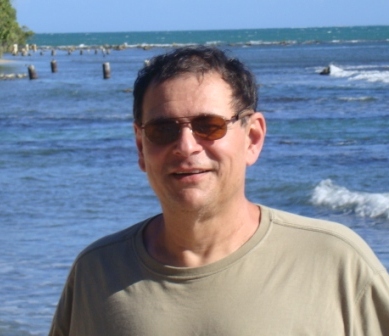
Dave Bush, Ph.D.
Professor of Geology
Marian Buzon, Ph.D.
Associate Professor of Geology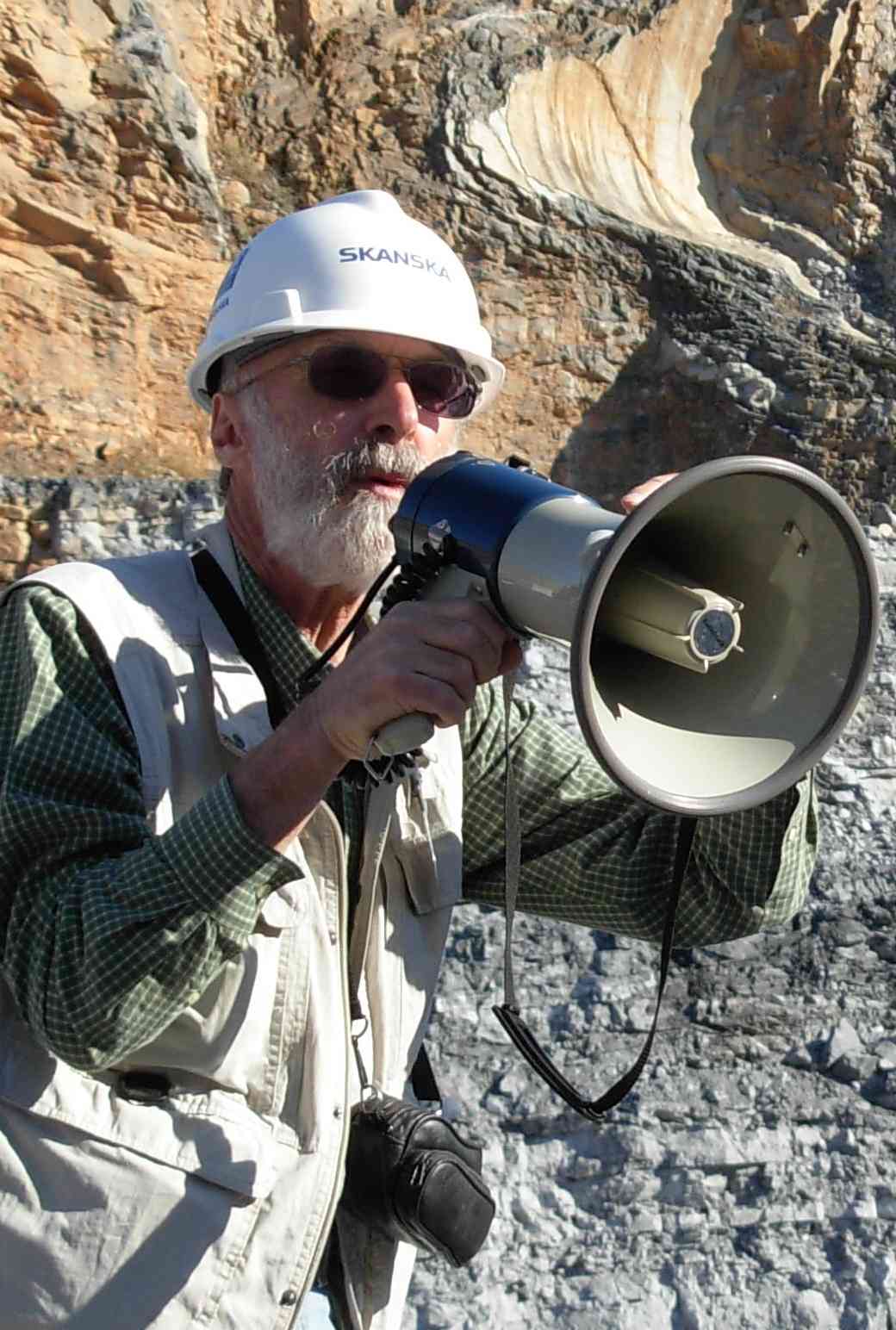
Timothy M. Chowns, Ph.D.
Professor Emeritus of Geology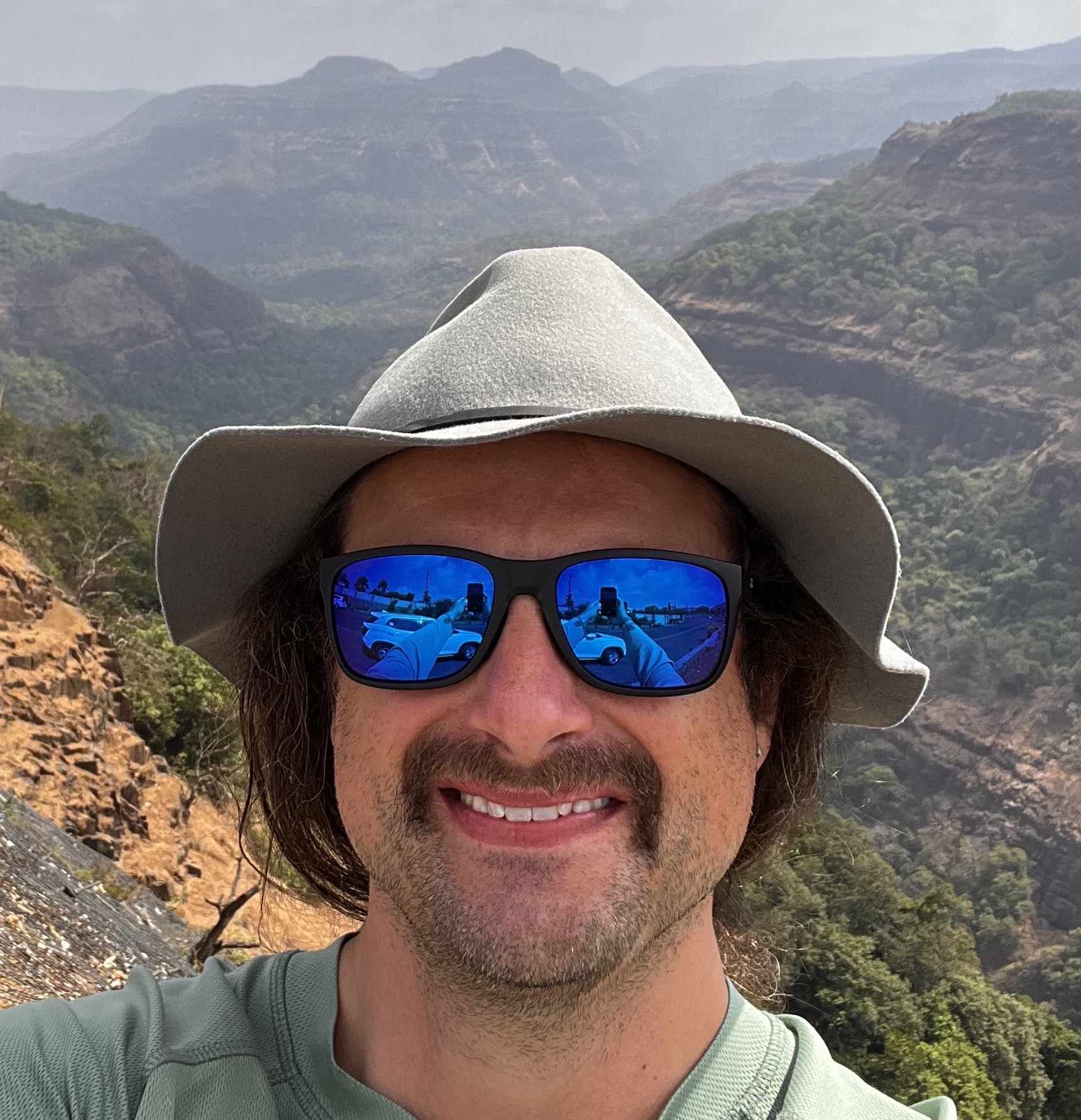
Ryan Currier, Ph.D.
Associate Professor of Geology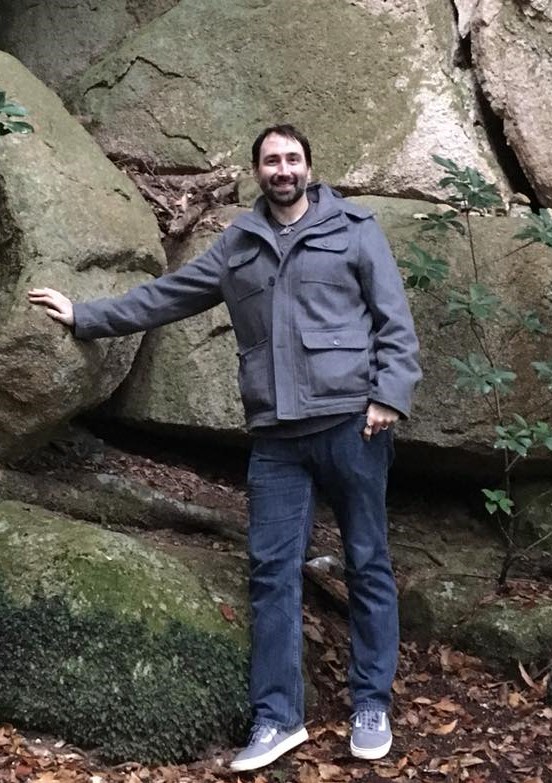
Brad Deline, Ph.D.
Professor of Geology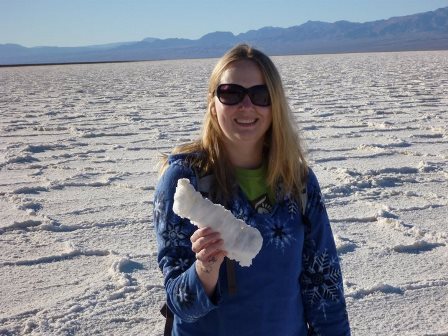
Georgina DeWeese, Ph.D.
Professor of Geography
Hannes Gerhardt, Ph.D.
Professor of Geography
Andrew Ivester, Ph.D.
Assistant Professor of Geography
Randal Kath, Ph.D.
Professor of Geology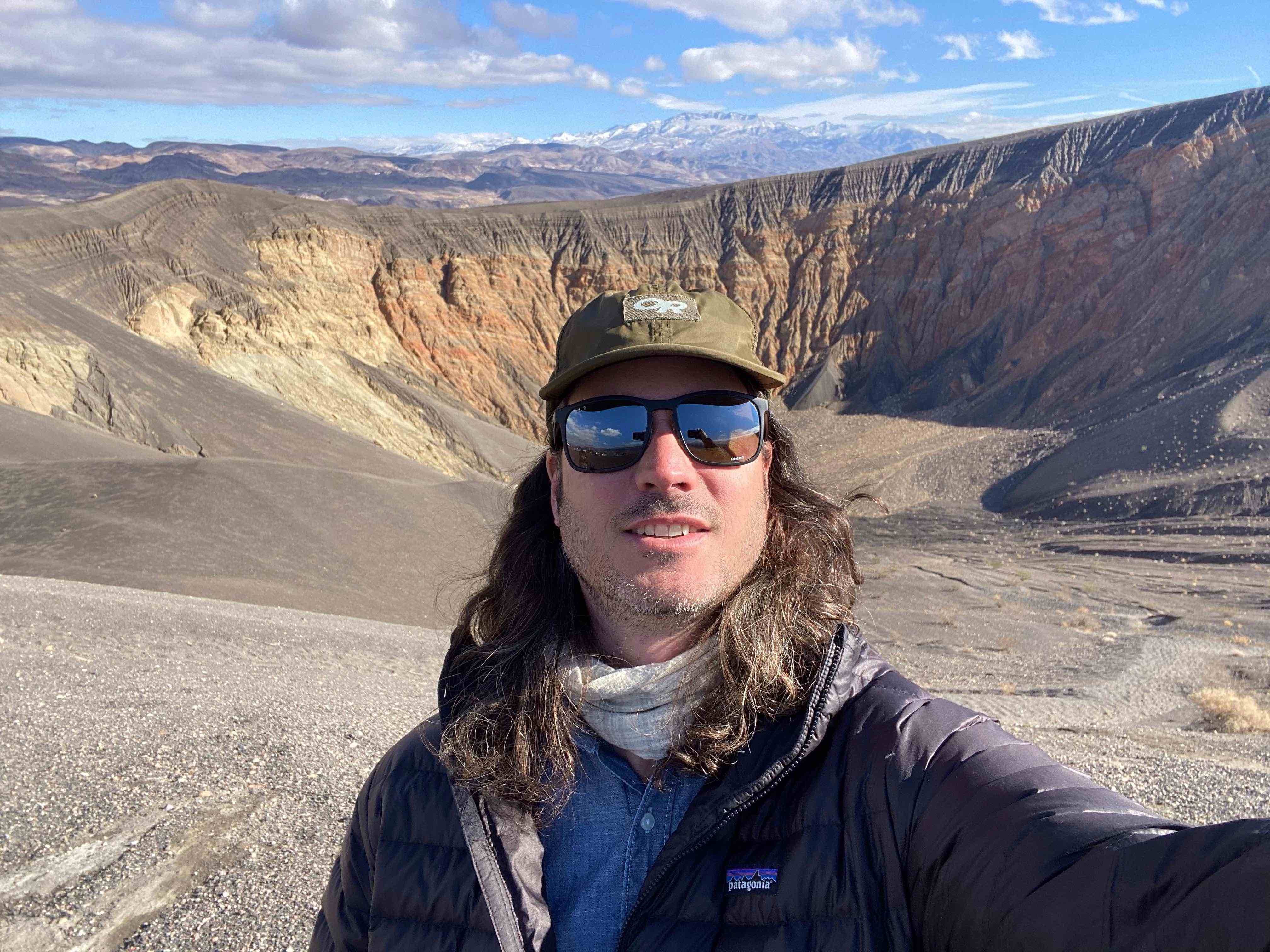
Cody Mason, Ph.D.
Associate Professor and Program Coordinator of Geology
Shea Rose, Ph.D.
Professor & Program Coordinator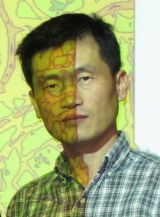
Jeong Seong, Ph.D.
Professor of Geography (GIS)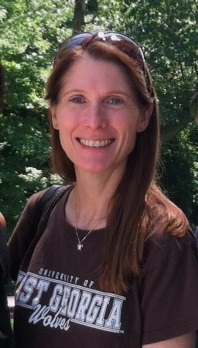
Karen Tefend, Ph.D.
Professor of GeologyGuidelines for Admittance
Each UWG online degree program has specific requirements that you must meet in order to enroll.
- Complete online application. A one-time application fee of $40 is required.
- Official transcripts from all schools attended. Official transcripts are sent from a regionally or nationally accredited institution.
- Verify specific requirements associated with specific populations identified here: Freshman Adult Learners Transfer International Home School Joint / Dual Enrollment Transient Auditor Post-Baccalaureate Non-Degree Seeking Readmission
Application Deadlines
Undergraduate Priority Deadlines
Fall Semester - June 1
Spring Semester - November 15
Summer Semester - May 15
Admission Process Checklist
Check your Application Status
Contact
Contact the Office of Undergraduate Admissions for additional information.
Specific dates for Admissions (Undergraduate only), Financial Aid, Fee Payments, Registration, Start/End of term, Final Exams, etc. are available in THE SCOOP.
- Students will be able to demonstrate knowledge of disciplinary elements of Earth and Environmental Science by explaining phenomena studied, foundational concepts, and key theories and methods.
- Students will be able to apply appropriate research methodology and techniques to analyze problems related to EES.
- Students will be able to produce research/scientific findings through the design and implementation of a faculty-mentored research project.
- Students will be able to communicate effectively knowledge about EES phenomena, concepts, and methods in both oral and written presentations.
